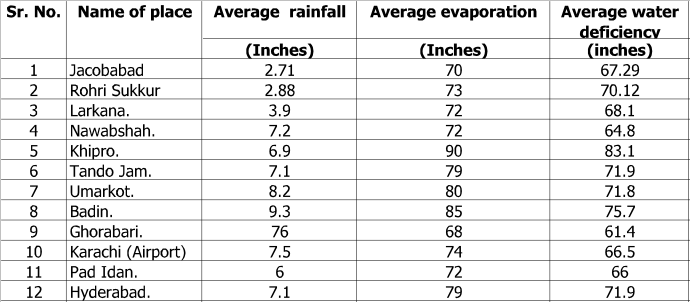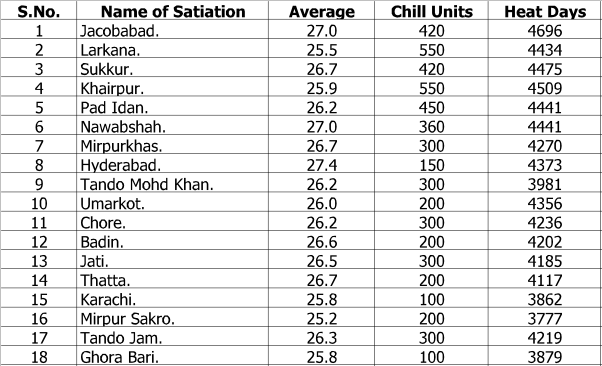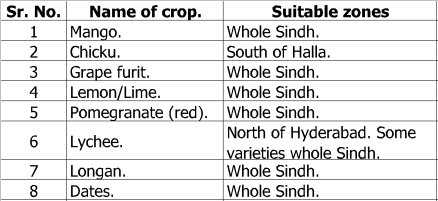







Sindh is a desert in a way that annual precipation (rainfall and not dew) is hardly 10% of annual evaporation and water deficiency is almost 90%. Was it not for the water of Indus, The Central Alluvial Plains of Sindh would have been a desert like Thar and Kohistan. In the two regions plant survive on rainfall and absorption of some amount of dew by the leaves. Such plants have vast amount of root system and are able to capture most of rainfall and store it in their roots and other components and their thick leaves help in less moisture loss due to evapotranspiration. Where plants or bushes and trees grow their roots spread to the next plant of their own species and they produce antibiotics, which do not allow other types plants to grow in between. This is typical behaviour of desert plants world over.
Once agriculture started around 7,000 BC, the man removed all plants from the cultivated land except those he had some use for and planted crops and trees of his own utility. These needed more water, which was provided by the Indus. Table below given month-wise rainfall, evaporation and water deficiency of some places in Sindh.
Table showing annual rainfall, evaporation and water deficiency various places in Sindh.

The above figure clearly shows that water deficiency is as high as 90% in most of Sindh.
Considering the month wise rainfall (not in table above) in general rainy season is July and August, but the annual quota of rain can fall usually occurs on about 7 days in July-August. There have been little or no rain falls in May and October. Winter rainfall is hardly 10% of summer rainfall usually not exceeding ½ inch annually and contributes very little to economy. There have been exception of heavy rainfall in May 1999 due, to tornado or heavy winter rainfall in 2003 (?), but this is not the general rule.
There are possibilities of rainfall of 5 inches in one day and in 5 days. The first is not only going to cause floods in vast areas but is also going to damage crops in one way or the other. The second again is going to cause some damage to corps and some floods but flood damage can be limited, unless like 2003, 5 inches rainfall occurred in the same week in the three districts namely; Nawab Shah, Sanghar and Mirpurkhas and caused main drain of LBOD to breach. We have to plan for disposal of 5 inches rainfall in one day, which occurs in Thatta and Badin districts once in 5 years, in Hyderabad district once in 10 years and once in 20 years in Jacobabad as shown in maps.
Planning of any crops has to take care of its climatic requirements. Our studies show that whole Sindh can grow all kinds of crops grown in South California in Imperial County and Baker field, where maximum annually temperatures hit 53° and 46°C, and are higher than Jacobabad in the first place and same as Nawabshah in the second place. Future plans for agriculture have to take climatic factors as main consideration, more than soil and water requirement. Some crops have certain heat requirements for example for cotton bolls to open, maximum temperatures over 32°с are needed for 95 days. For other corps minimum temperatures below 7°C for certain hours are needed to flower. The information on these lines is available with meteorological department, but neither compiled nor known to farmers or researchers. For the readers therefore the information on total Heat Units (days temperatures above 15-36°C) and Chill Units (hours temperatures below 7.2°C) is given in table below.

With the help of above table it will not be difficult to plan for any crops in Sindh. The climate date reveal a great potential for cropping in Sindh and specially of value added crops and fruits and industrial crops. The growers have to get an idea of field drainage, needed to remove rainfall runoff from the field, if beyond immediate use by the crops. Climatic map dividing Sindh into 12 climatic zones against three as mentioned by maps of 1886 and a century later of 1986, has been superseded by this map and based on analysis of it following will be the corps suiting various climatic zone.

By
M. H. Panhwar
CLIMATE OF SINDH AND IRRIGATION

| Tribute |
| Resting Place |
| Books |
| Articles on Sindh |
| Technical Atricles |
| Activities |
| Photo Gallery |
| Videos |